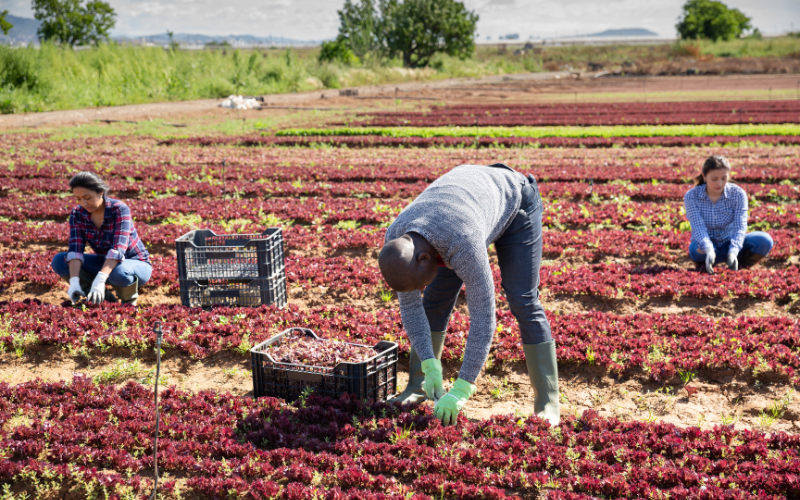How farms and ranches in Washington have been impacted by COVID-19
Nearly 60% of farms and ranches in Washington State have been negatively impacted by COVID-19 in 2020, and expect to make changes to adapt their businesses in 2021, according to a new report published by the University of Washington Center for Public Health Nutrition in collaboration with Washington State University and the Washington State Department of Agriculture.
In Washington State, 65%–nearly 2 in 3 producers–experienced increased operation costs, and 48% experienced annual revenue decreases when comparing 2020 to 2019 revenue.
“It’s great to be able to put numbers behind what farmers have been experiencing this past year,” said project lead Sarah Collier, who is also an assistant professor of environmental and occupational health sciences and nutritional sciences in the UW School of Public Health.

Collier and the team of researchers working on the project surveyed Washington state farmers and ranchers between December 1, 2020 through the end of January 2021, and heard from 265 farms ranging in size from less than 10 acres up to 2000 acres, representing 33 of the 39 counties in the state.
Approximately 60% of respondents farmed in Western Washington and 40% in Eastern Washington, and the highest density of participants by county include King County, Puget Sound counties, as well as Franklin, Spokane, and Yakima counties.
The data gathered shows that the most severe impacts for farmers during the pandemic have been due to closure of direct marketing outlets, closure or reduced capacity of indirect marketing channels, and disruption of distribution systems.

“Farmers have had to adapt in many ways. Not surprisingly, we see a lot of shifts in marketing channels: increases in direct to consumer and decreases in direct to restaurant, for instance. But the experience really differed for different farms, too. Some ramped up production, some reduced production. Some had to decrease their workforce, while others couldn’t find enough workers. Every farm is unique and the diversity of experiences here really speaks to that,” Collier said.
Many farmers, more than half, made at least one change in operations.

Forty-four percent of farmers increased production and 29% decreased their production. Some farmers had ideas for adapting, but more than 1 in 3 farms said financial, labor, or other issues were obstacles to making changes.
Many farmers have also formed new relationships and networks with other farms and co-ops and agribusinesses.
There are state and federal COVID-19 relief aid programs available to farmers, and for those who were successful in applying, they have been well-received. Some farmers said the process of applying for certain aid was too complicated for a farm their size though, or that they were not eligible.
Moving forward in 2021, more than two thirds of farmers polled continue to make significant changes in relation to COVID-19, with 38% of farmers expecting to adjust production volume in some way.
Read the report: COVID-19 Impacts & Adaptations Among Washington State Farm Businesses
The project is a collaboration between University of Washington Center for Public Health Nutrition, Washington State University, and the Washington State Department of Agriculture. Other researchers involved in the project include:
- Sarah Collier, Assistant Professor, UW
- Yona Sipos, Assistant Teaching Professor, UW
- Anna Fogel, Graduate Student, UW
- Dani Ladyka, Graduate Student, UW
- Taya DeLong, Student Assistant, UW
- Laura Lewis, Associate Professor, WSU
- Laura Raymond, Regional Markets Program Manager, WSDA
- Madison Moore, Agricultural Economist, WSDA
March 31, 2021